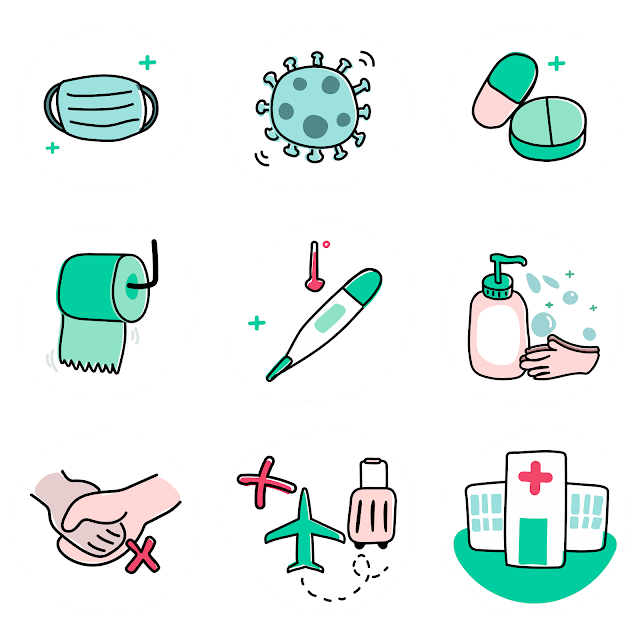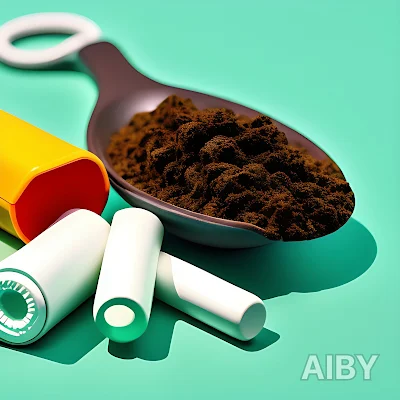What is SISPQ of Drugs or Medicines
SISPQ stands for "Specification, Identification, Safety, Purity, and Quality." It's a set of essential criteria and standards used in the pharmaceutical industry to ensure that drugs or medicines are safe and effective for use.
- Specification: This outlines the precise requirements and characteristics that a drug must meet, including its composition, strength, and packaging.
- Identification: Ensures that the drug's ingredients are correctly identified and verified.
- Safety: Focuses on the safety of the drug for human consumption, including considerations for potential side effects and interactions.
- Purity: Ensures that the drug is free from contaminants and impurities that could be harmful.
- Quality: Ensures that the drug meets the required quality standards and is manufactured consistently to maintain its safety and efficacy.
Adhering to SISPQ guidelines is crucial in the pharmaceutical industry to guarantee that medicines are of high quality and pose minimal risks to patients.
What is identity, strength, purity, potency, safety and efficacy of drug substance explains with paracetamol example?
Identity, strength, purity, and potency are the four essential parameters that determine the quality of a drug substance manufactured by any pharmaceutical company. We at ChemistryNotesInfo.Com try to explain you these complex terms in very easy to understand language, so don’t worry. Continue reading!
• Identity: It refers to the chemical composition of the drug substance and its ability to be identified by established methods. For example, paracetamol is also known as N-acetyl-para-aminophenol (APAP). So APAP is the identity of Paracetamol (acetaminophen or para-hydroxyacetanilide) and paracetamol is a non-opioid analgesic and antipyretic agent used to treat fever and mild to moderate pain.
• Strength: It refers to the concentration of the active ingredient in the drug substance. For example, a 500 mg paracetamol tablet contains 500 mg of paracetamol. So this 500mg concentration of API in tablet is its strength.
• Purity: It refers to the absence of impurities in the drug substance. For example, paracetamol should not contain any other substances apart from its active ingredient. So we can say that drug is pure (or have purity) if it do not contain anything else then required API and excipients, and it is not pure if it contains impurities along with drug substance.
• Potency: It refers to the ability of the drug substance to produce a therapeutic effect at a specific dose. For example, paracetamol is an analgesic and antipyretic agent used to treat fever and mild to moderate pain. So if you have fever and take a paracetamol tablet. After getting tablet you have no more fever & feel better then we can say that paracetamol tablet have potency.

• Safety: It refers to the relative absence of harmful effects associated with the use of a drug substance. The safety profile of a drug substance is determined by its pharmacological properties, dosage, route of administration, and patient characteristics. For example, paracetamol is generally considered safe when used at recommended doses but can cause liver damage if taken in excess. So we can say that drug substance is safe if it do not harm or do not have side effect. If you feel any harm or side effect like vomiting's, nausea, swelling, dizziness, hospitalization, sever health impact or death of patient then drug is not safe.
• Efficacy: It refers to the ability of a drug substance to produce a desired therapeutic effect under specific conditions. The efficacy of a drug substance is determined by its pharmacological properties, dosage, route of administration, and patient characteristics. For example, paracetamol has been shown to be effective in reducing fever and mild to moderate pain when used at recommended doses. So efficacy shows us how effective a drug is to treat any condition or disease.
These parameters are crucial for ensuring that a drug substance is safe and effective for human use.
How identity, strength, purity, potency, safety and efficacy of drug substance is tested, explain with paracetamol example?
The testing of drug substances for identity, strength, purity, potency, safety, and efficacy is a complex process that involves various analytical, quantitative, qualitative, chemical & microbiological test methods and regulatory requirements.
• Identity of drug substance: The identity of a drug substance is tested by using established test methods such as chromatography, spectroscopy, and mass spectrometry.
For example, the identity of paracetamol can be determined by using thin-layer chromatography (TLC), high-performance liquid chromatography (HPLC), or ultra-performance liquid chromatography coupled to tandem mass spectrometry (UPLC-MS). These stablished validated test methods help us to identify the actual drug substance in any test sample.
• Strength of drug substance: The strength of a drug substance is tested by using validated test methods such as titration, spectrophotometry, or HPLC. For example, the strength of paracetamol can be determined by using UV spectrophotometry. So this test method UV spectrophotometry help us to find out the concentration of the active ingredient in the drug substance, means how much mg paracetamol API drug is present in any tablet, capsule or injection.
• Purity of drug substance: The purity of a drug substance is tested by using validated test methods such as HPLC or gas chromatography (GC).
For example, the purity of paracetamol can be determined by using HPLC. HPLC test methods help us to find out that, is our product have impurities or not.
• Potency of drug substance: The potency of a drug substance is tested by using established test methods such as bioassays or receptor binding assays.
For example, the potency of paracetamol can be determined by using a cell-based assay that measures its ability to inhibit the production of prostaglandins.
• Safety of drug substance: The safety of a drug substance is tested by using various preclinical and clinical studies. These preclinical and clinical studies are used to evaluate pharmacological properties, toxicity, and side effects of drug substance or medicine.
For example, the safety of paracetamol has been extensively studied in humans and is generally considered safe when used at recommended doses. The OTC (over the counter) drugs are generally safe, but always consult a doctor before taking any drug substance or medicine.
• Efficacy of drug substance: The efficacy of a drug substance is tested by using various preclinical and clinical studies. These preclinical and clinical studies are used to evaluate pharmacological properties and therapeutic effects of drug substance or medicine.
For example, the efficacy of paracetamol has been demonstrated in numerous clinical trials that have shown its effectiveness in reducing fever and mild to moderate pain.
The testing of drug substances for identity, strength, purity, potency, safety, and efficacy involves various analytical, quantitative, qualitative, chemical & microbiological test methods and regulatory requirements that ensure their quality and safety for human use. Production, Quality control, Quality assurance and many other functions of pharma companies working with many scientists and regulatory bodies to deliver safe and effective drugs.
What is the difference between purity and potency?
Purity and potency are two important parameters that determine the quality of a drug substance or any medicine.
Purity refers to the degree to which a drug substance is free from impurities or other substances. Purity is usually expressed as a percentage of the total weight of the drug substance.
For example, a drug substance with 99% purity means that 99% of its weight is the active ingredient, and the remaining 1% is impurities or other substances.
Potency It refers to the ability of a drug substance to produce a therapeutic effect at a specific dose. Potency is usually expressed as the amount of active ingredient required to produce a specific effect.
For example, a drug substance with high potency requires a lower dose to produce the same effect as a drug substance with low potency.
In summary we can say that, purity and potency are two distinct parameters that are essential for ensuring the quality and efficacy of a drug substance. While purity refers to the degree of freedom from impurities or other substances, potency refers to the ability of a drug substance to produce a therapeutic effect at a specific dose.
What is the difference between potency and efficacy of drug substance?
Potency and efficacy are two important concepts in pharmacology. Potency refers to the amount of drug required to produce a certain response, while efficacy refers to the maximum effect that a drug can produce regardless of dose. In other words, potency is a measure of the amount of drug necessary to produce an effect of a given magnitude, while efficacy is the ability of a drug to produce a physiological response when it interacts with a receptor.
Potency is often confused with efficacy, but they are not synonymous and should not be used interchangeably. Potency is a measure of drug strength, while efficacy is a measure of therapeutic potency.
For example, consider two drugs A and B. Drug A has a lower potency than drug B, meaning that it requires more of drug A to produce the same effect as drug B. However, drug A may have higher efficacy than drug B, meaning that it can produce a greater maximum effect than drug B.
In summary, potency and efficacy are two distinct concepts in pharmacology that are often confused with each other. Potency refers to the amount of drug required to produce a certain response, while efficacy refers to the maximum effect that a drug can produce regardless of dose.
What is the difference between strength and potency of drug substance?
Strength and potency are two important concepts in pharmacology. Strength refers to the amount of drug present in a given volume or weight of a product, while potency refers to the amount of drug required to produce a certain response.
Potency is often confused with strength, but they are not synonymous and should not be used interchangeably. Potency is a measure of drug strength, while strength is a measure of the total amount of drug present in a particular formulation or preparation.
For example, consider two drugs A and B. Drug A has a lower potency than drug B, meaning that it requires more of drug A to produce the same effect as drug B. However, drug A may have higher strength than drug B, meaning that it contains more of the active ingredient per unit of volume or weight.
In summary, strength and potency are two distinct concepts in pharmacology that are often confused with each other. Strength refers to the amount of drug present in a given volume or weight of a product, while potency refers to the amount of drug required to produce a certain response. You are learning at
www.ChemistryNotesInfo.com
What is the difference between strength and purity of drug substance?
Strength and purity are two important concepts in pharmacology. Strength refers to the amount of drug present in a given volume or weight of a product, while purity refers to the degree to which a drug substance is free from impurities.
Purity is often confused with strength, but they are not synonymous and should not be used interchangeably. Purity is a measure of the degree to which a drug substance is free from impurities, while strength is a measure of the total amount of drug present in a particular formulation or preparation.
For example, consider two drugs A and B. Drug A has higher purity than drug B, meaning that it contains fewer impurities than drug B. However, drug A may have lower strength than drug B, meaning that it contains less of the active ingredient per unit of volume or weight.
In summary, strength and purity are two distinct concepts in
pharmacology that are often confused with each other. Strength refers to the amount of drug present in a given volume or weight of a product, while purity refers to the degree to which a drug substance is free from impurities. We think now you learns quality terms used in pharma very well. If so then, thanks team
Chemistry Notes Info by sharing this article with your friends.



%20(1).png)
